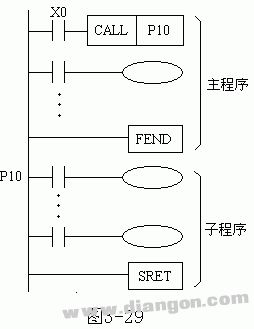Mitsubishi PLC subroutine call and subroutine return instruction - Database & Sql Blog Articles
The subroutine call instruction, labeled as FNC01, is used to jump to a specific label in the program. It supports operands ranging from P0 to P127 and requires 3 program steps to execute. The subroutine return instruction, known as SRET and numbered FNC02, does not require any operands and takes only 1 program step. As shown in Figure 1, when X0 is activated, the program will jump to the label P10 and execute the corresponding subroutine. Upon reaching the SRET instruction, the program returns to the next line after the CALL instruction, resuming normal execution flow.

Figure 1: Subroutine call and return instructions in action
When working with subroutine calls and returns, there are a few important considerations to keep in mind:
- Ensure that the labels used for subroutines are unique and do not conflict with jump instruction labels.
- Subroutines can be nested up to 5 levels deep, allowing for complex and modular programming structures.
Using these instructions effectively can help improve code organization, reduce redundancy, and enhance the overall efficiency of your program logic. Always test your subroutines thoroughly to ensure they behave as expected in different scenarios.
stainless steel braided sleeving,stainless steel wire sleeve,stainless steel expandable braided tubular sleeving,copper core braided mesh tube
Dongguan Zhonghe Electronics Co., Ltd. , https://www.zhonghesleeving.com